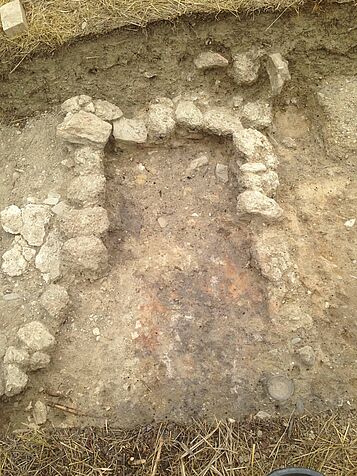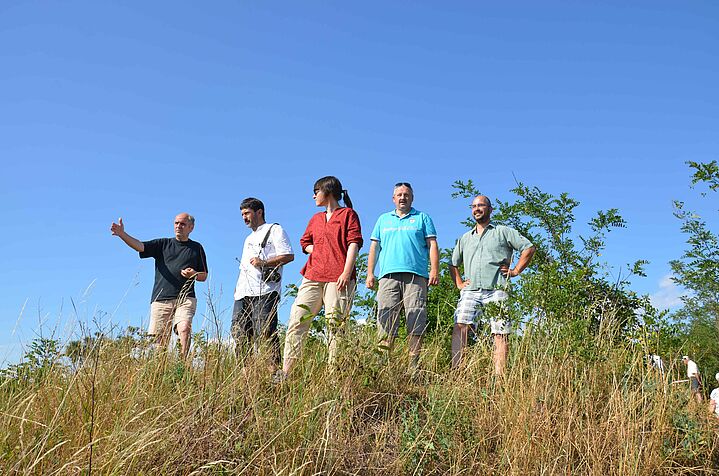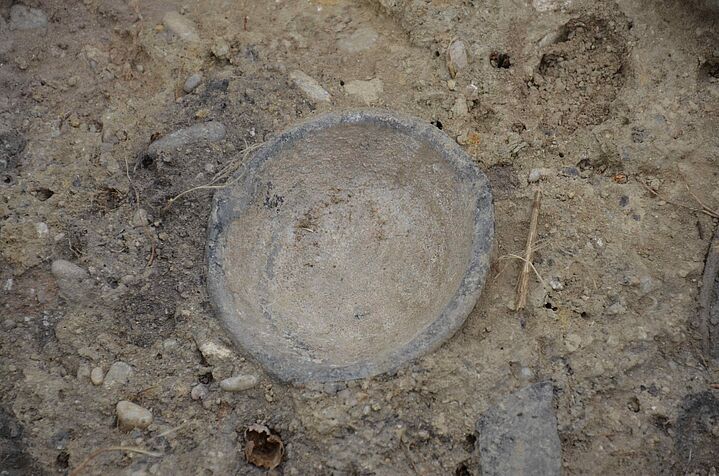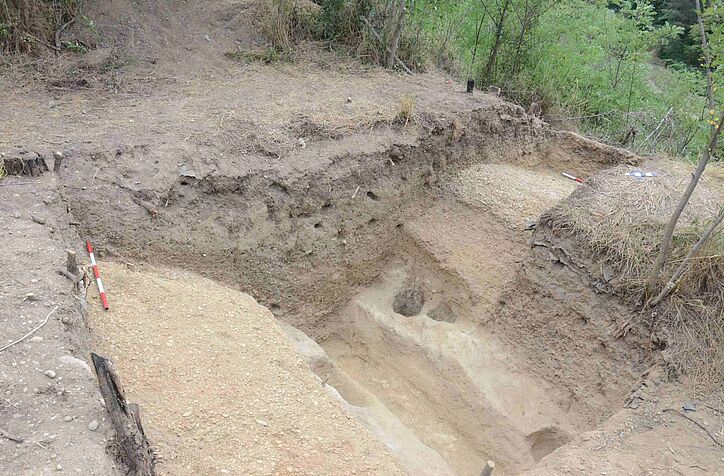Excavations at the medieval fortification of Neudegg, Lower Austria
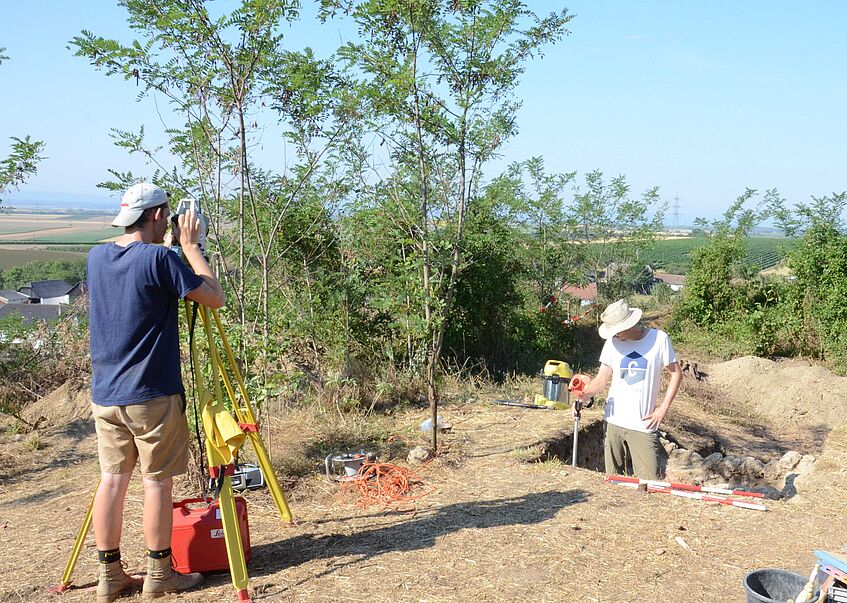
Documentation of the excavation
Research question
The objective of this project is the archaeological investigation of the fortification at Neudegg, a site for which no archaeologically excavated objects suitable for precise dating have been identified to date. Although pottery has been consistently discovered over recent decades, it has yet to undergo comprehensive typological analysis. Additionally, the study explores a potential connection between the lineage of the Neudeggers, documented in the Wagram region, and the fortification.
The first written references to the Neudegger lineage at the close of the High Middle Ages suggest the possibility of the fortification's origin during this period. However, this remains speculative at the current stage of research. Local historian Karl Mehofer attempted to identify the fortification as the "ancestral seat" of the Neudeggers, whose supposed progenitor, Otacher, is believed to be documented around 1130–1140 AD. The earliest recorded mention of a noble family associated with the site, cited by Weigl in HONB, dates to 1296 AD with the name "de Neidekke." Later references include "the Neidekker" in 1323 AD, "von Neidegg" around 1368 AD, and "firm Neydeck" before 1411 AD.
A detailed historical ownership history of the site remains a subject for future research.
Location
The fortification is situated approximately 250 meters northeast of the local chapel, positioned on a narrow, rocky ridge that extends from the expansive Wagram plateau toward the modern village. This ridge, which becomes increasingly rocky near the site and gradually narrows, culminates at a frontal ditch measuring 3 to 4 meters in depth, effectively isolating the small area from the surrounding hinterland.
Beyond this ditch lies an approximately rectangular plateau, featuring a narrow ridge on the access side, separated by a shallow trench. This plateau likely constituted the core zone of the castle. Adjacent to it is a broad, trench-like depression, which may indicate the location of a former structure. The southeastern and northwestern flanks of the entire site descend steeply, rendering them largely inaccessible. In contrast, the terrain leading toward the village descends in clear, widening steps. These formations could be natural; however, they might also result from artificial land preparation, possibly for settlement purposes.
Notably, excavations at the site have uncovered significant finds, including a stone stove measuring approximately 2 by 1 meters, associated with the castle, and a substantial stone foundation wall about 1.5 to 2 meters thick. Artifacts such as an aquamanile, a glass cup, and a well-preserved oil lamp have been discovered, alongside numerous pottery fragments dating from the late 13th to early 14th centuries AD. These findings offer valuable insights into the lifestyle and habits of the former inhabitants, who likely belonged to a higher social class.
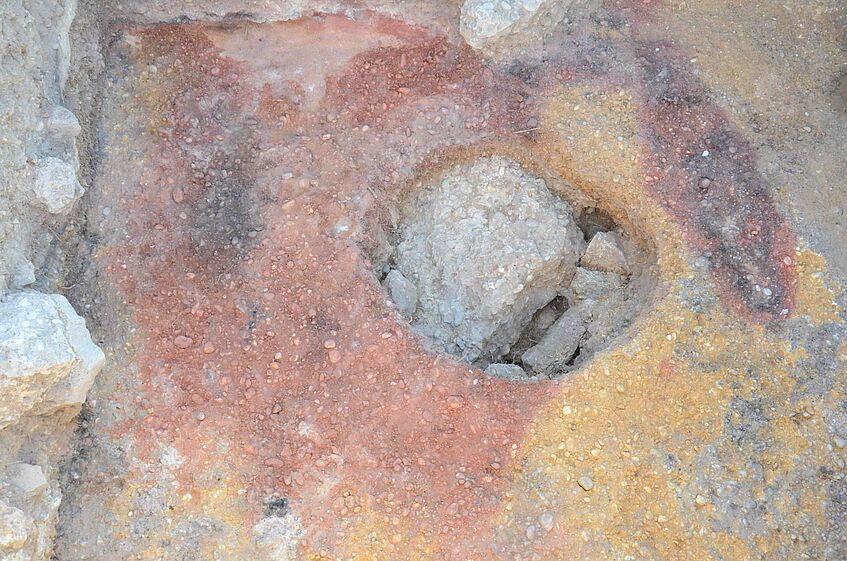
Burnt layer (reddish and black colored areas)
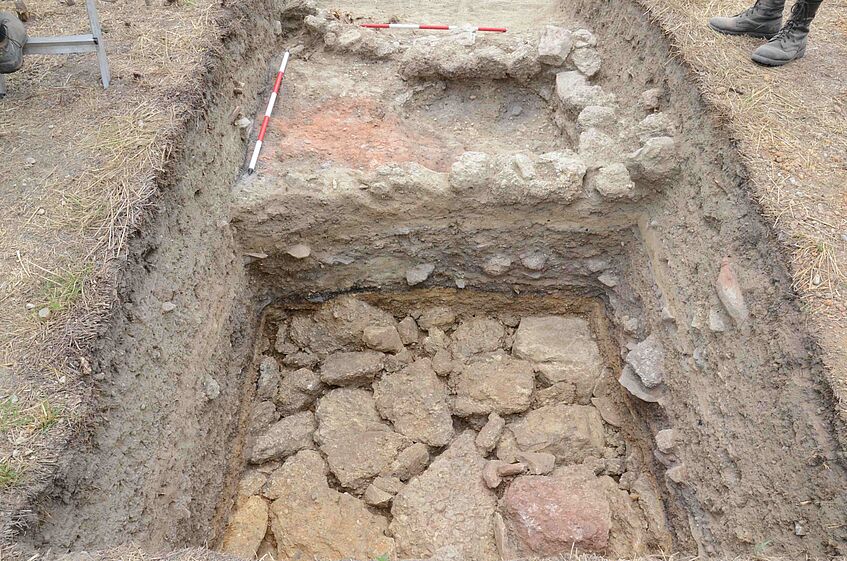
Remains of a stone foundation about 1.5m thick
Preliminary Results
During the excavations at the Neudegg fortification, several noteworthy artifacts were uncovered. A stone stove measuring approximately 2 by 1 meters, likely associated with the castle, was excavated, along with a substantial stone foundation wall ranging from 1.5 to 2 meters in thickness. Additionally, remnants of an aquamanile and a glass cup were discovered, as well as a fully intact oil lamp. Numerous pottery fragments dating from the late 13th to early 14th centuries AD were found, alongside animal bones from pork, beef, chicken, and fish. In a second excavation trench nearby, an inner ditch approximately 2.5 meters deep was excavated, yielding a few pottery fragments and metal objects, including an arrowhead. These findings provide initial insights into the lifestyle and habits of the former inhabitants, who likely belonged to a higher social class. The artifacts have been restored, documented, and are being prepared for publication.
Cooperationpartner
- Dr. Martin Krenn, Archäologie NÖ, Bundesdenkmalamt
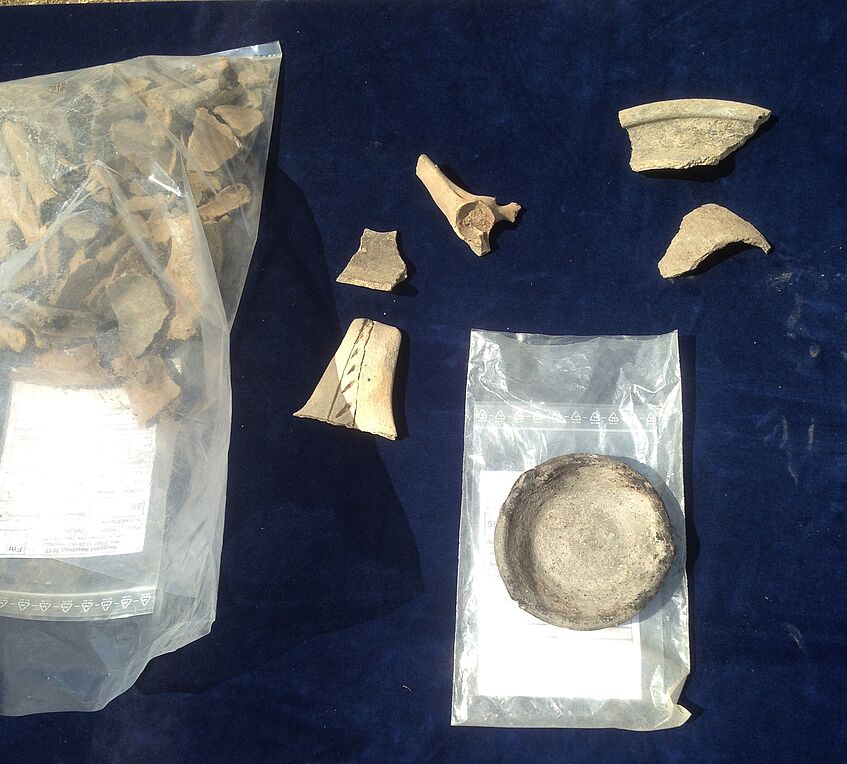
Finds from the settlement layers
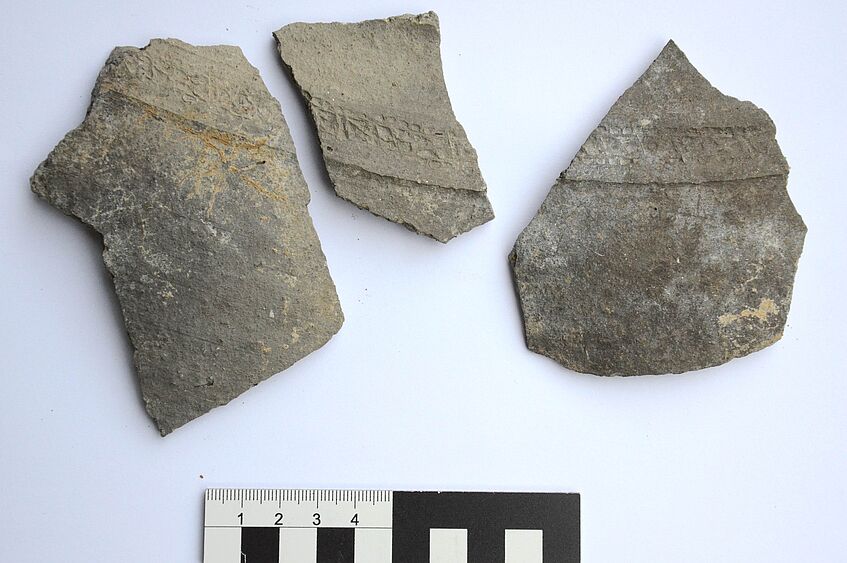
Pottery fragments with ornaments
Attractions in the Neudegg area (selection):
- Heldenberg, Kleinwetzdorf: Kreisgrabenanlage
- Radlbrunn: Brandlhof
- Großriedenthal: Hausberg von Großriedenthal (www.grossriedenthal.at/erkunden/ausflugsziele)
- Neudegg: Mittelalterlicher Burgstall, Ortskapelle, Lößhof-Profil "Neun Mauna" (www.grossriedenthal.at/erkunden/ausflugsziele)
- Elsarn: Freilichtmuseum Elsarn im Straßertal
Literature:
N. Siegmeth - M. Mehofer, Die mittelalterliche Keramik der Ausgrabungen auf dem Burgstall von Neudegg, Nö (in Vorbereitung).
Kunst, G. K., Mehofer, M., Obenaus, M., Struktur und Bedeutung - Tierreste aus Neudegg. in F. Pieler, & E. Nowotny (Eds.), Beiträge zum Tag der Niederösterreichischen Landesarchäologie 2023. Amt der NÖ Landesregierung, Abt. Kunst und Kultur. Veröffentlichungen aus den Landessammlungen Niederösterreich Band 4, 2023, 93 – 100.
Mehofer, M., & Obenaus, M. (2017). Ausgrabungen am Burgstall von Neudegg, NÖ. Fundberichte aus Österreich, 56, 200-201.
Mehofer, M., & Obenaus, M. (2017). Bericht zur Grabung Neudegg, OG Großriedenthal, NÖ 2017. Fundberichte aus Österreich, D2231-D2252.
Löcker, K., Mehofer, M., Archäologisch-geophysikalische Prospektion Burgstall Neudegg, in: Hebert, B., BDA, Fundberichte Österreichs 57, 2018, D2359-D2371. DOI: 10.12905/0380.foe57-2020-8713
Löcker, K., Mehofer, M., Archäologisch-geophysikalische Prospektion Hausberg Großriedenthal, in: Hebert, B., BDA, Fundberichte Österreichs 57, 2018, D2372-D2384. DOI: 10.12905/0380.foe57-2020-8713

